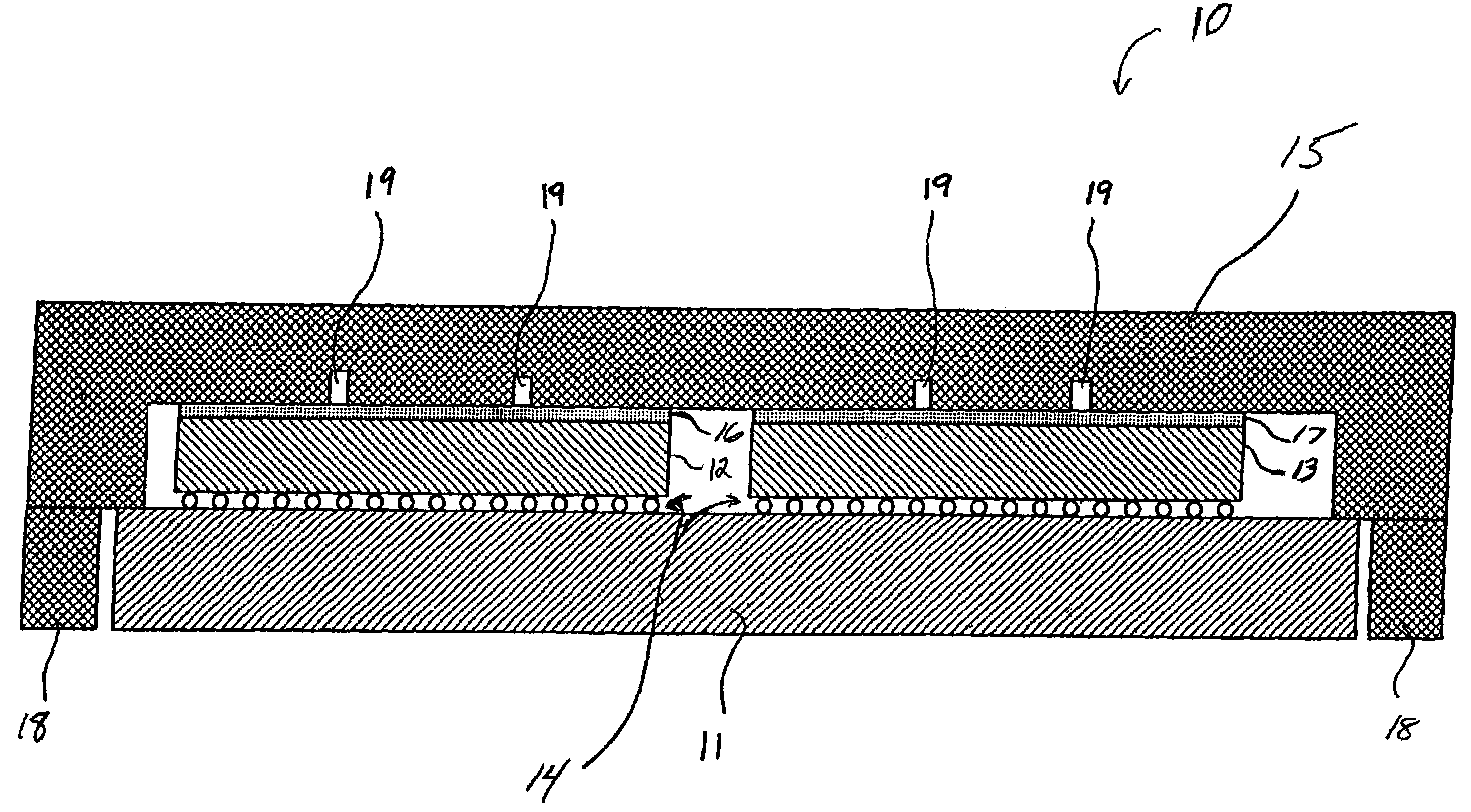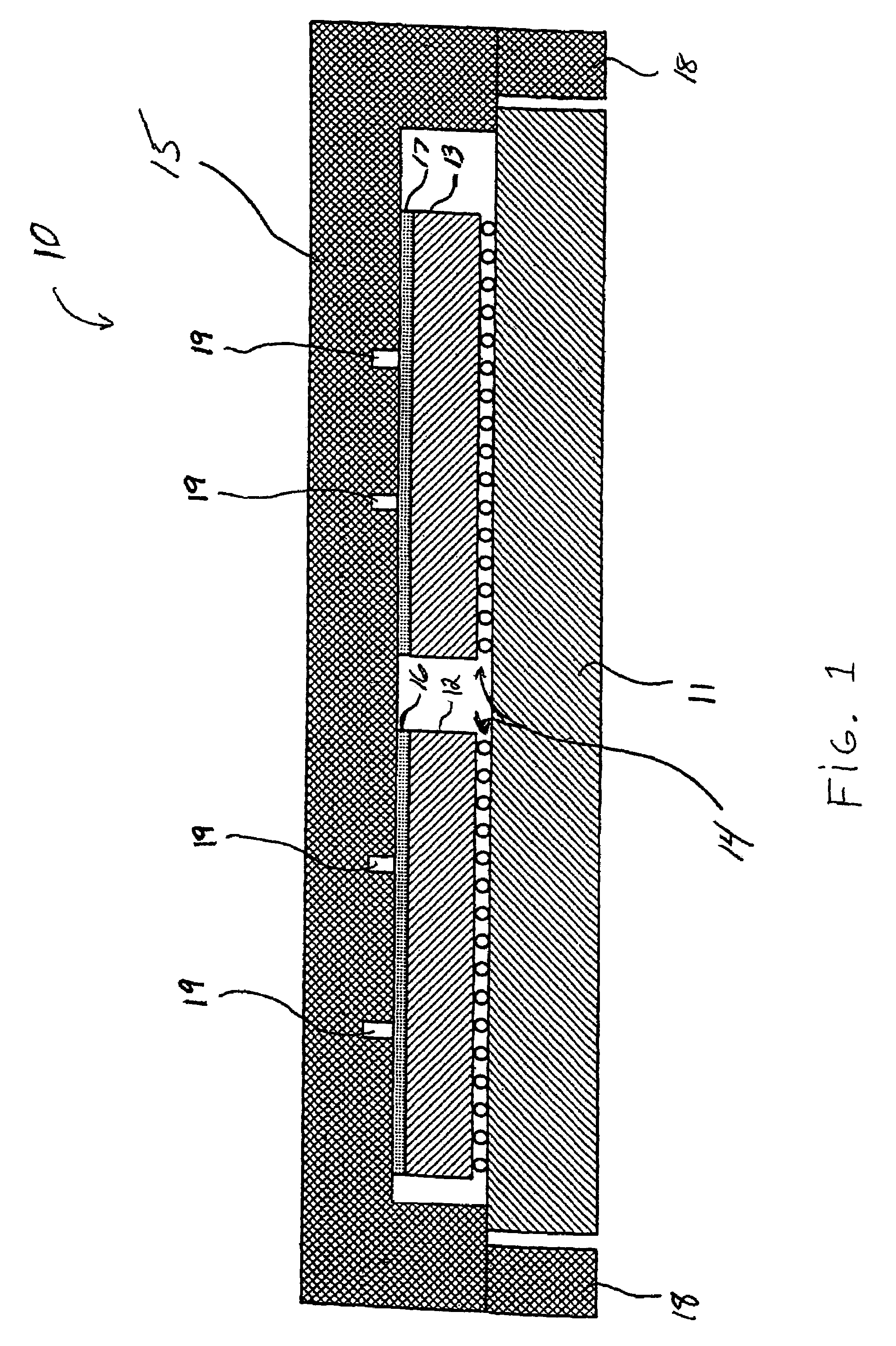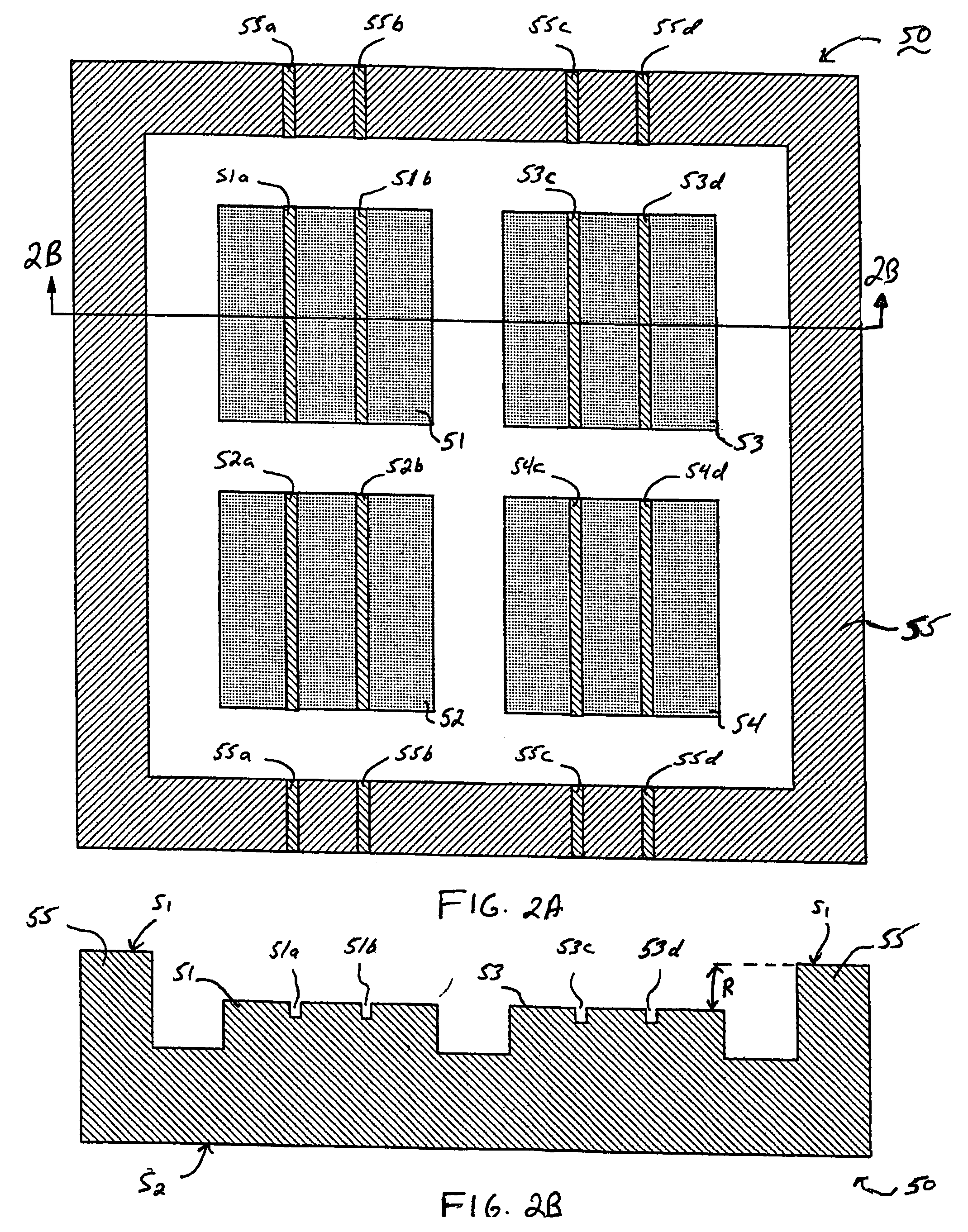Apparatus and methods for cooling semiconductor integrated circuit package structures
a technology of integrated circuits and semiconductors, applied in the direction of cooling/ventilation/heating modifications, semiconductor/solid-state device details, semiconductor devices, etc., can solve the problems of increasing power density, increasing system performance limitations, and increasing the problem of effective heat removal
- Summary
- Abstract
- Description
- Claims
- Application Information
AI Technical Summary
Benefits of technology
Problems solved by technology
Method used
Image
Examples
Embodiment Construction
[0020]FIG. 1 schematically illustrates, in general, an apparatus for thermally coupling semiconductor chips to a heat conducting device using compliant thermally conductive material, according to an exemplary embodiment of the invention. In particular, FIG. 1 is a schematic cross-sectional side view of an apparatus (10) (or MCM package) for thermally coupling the back (non-active) surface of semiconductor chips (12) and (13) to a heat conducting device (15) (e.g., package lid, thermal hat, etc.) using compliant thermally conductive material layers (16) and (17) (or TIM (thermal interface material) layers) formed of, e.g., thermal paste. The heat conducting device (15) is rigidly positioned in relation to the back surfaces of the chips (12) and (13). The TIM layers (16) and (17) provide mechanical compliance, as well as a heat conducting path, between the chips (12) and (13) and the heat conducting device (15).
[0021]As explained in further detail below, the apparatus (10) is designed...
PUM
 Login to View More
Login to View More Abstract
Description
Claims
Application Information
 Login to View More
Login to View More - R&D
- Intellectual Property
- Life Sciences
- Materials
- Tech Scout
- Unparalleled Data Quality
- Higher Quality Content
- 60% Fewer Hallucinations
Browse by: Latest US Patents, China's latest patents, Technical Efficacy Thesaurus, Application Domain, Technology Topic, Popular Technical Reports.
© 2025 PatSnap. All rights reserved.Legal|Privacy policy|Modern Slavery Act Transparency Statement|Sitemap|About US| Contact US: help@patsnap.com



